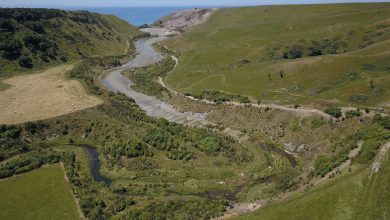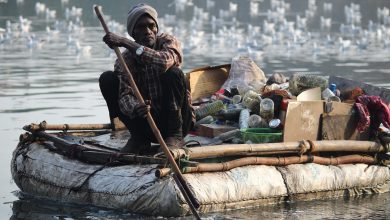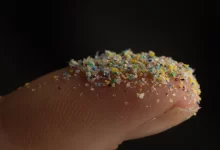Hunters extend trapping network to create 20km whio habitat in Kaimanawa Forest

Hunters lay down their guns to protect endangered native whio (blue duck)
TAUPO, 18 February 2019: The Central North Island Sika Foundation entered the Kaimanawa Forest for the second time to layout dozens of Goodnature A24 traps over the past weekend.
This latest trapping effort comes as part of the Central North Island Sika Foundation Kaimanawa Whio Recovery Project to protect the vulnerable whio (blue duck) populations found in the headwaters of the Mohaka River in the Northern Kaimanawas.
This time the team trapped the Oamaru River after deploying 108 Goodnature 24 traps near the site in August last year. These trap networks have come following a survey last year of the Kaipo and Oamaru rivers by the recreational hunter-led group, which discovered a defenceless population of one of New Zealand’s most vulnerable endemic ducks.
In the first 90 days, the traps recorded killing 378 pest kills, and the team who were out checking the traps even sighted a breeding pair of whio flanked by five whio chicklings about to fledge. This incredible feat has led to the site being recognised by the Department of Conservation (DOC) as an Official Whio Recovery Site.
“We found one breeding pair in each stream,” says project leader, Gary Harwood. “We decided we had to act and managed to fundraise $20,000 by August 2018 to begin the first phase of the trapping project, which we used to cover 10km of the Kaipo River upstream from where it joins the Mohaka River. We’ve since raised another $20,000, to trap the Oamaru stream.”
Now in stage 2 of the project, this past weekend’s layout saw 73 traps deployed to cover a 10-kilometre distance from the point where the Oamaru River meets the Mohaka River up to the Waitawhero Stream. The group was granted vehicle access to a remote part of the Kaimanawa Forest Park through the private Poronui Lodge property.
“The first phase of the project was a roaring success, and we can’t wait to see how the whio population in the forest bounces back following our efforts,” says Harwood.
The traps will be used to protect the whio in the streams from predation. There are an estimated 3,000 whio left in existence, a population decline which can partially be attributed to predation by rats and stoats.
“The success of the first layout by the Central North Island Sika Foundation and the dedicated team of volunteers is a testament to the incredible impact that New Zealanders can have on helping to achieve wider conservation goals,” says Goodnature co-founder Robbie van Dam. “We’re thrilled to see our technology being used to help the whio population in the Kaimanawa forest bounce back.”
The A24 automatic trap, developed by Wellington conservation technology company Goodnature, is the world’s only predator trap which self-resets up to 24 times before it needs to be serviced by a human.



It has been proven to reduce rat and stoat populations down to near undetectable levels. The network of traps will reduce the impacts of these pests on the New Zealand native birds.
The Central North Island Sika Foundation along with representatives from Hunters and Habitats, and the NZ Deer Stalkers Association Taupo branch meet with DOC Taupo representatives biannually to discuss topics of mutual interest.
Now that we have stage 1 and stage 2 in place, we will start fundraising for stage 3 of the project, a further 10km of the Kaipo River upstream from where stage 1 ends, this will give us a total of 30km of protected whio habitat in the area.”
The hunters in this group have all acknowledged a special connection forged between the group and the forest. As hunters who spend a lot of time deep in New Zealand’s bush, a common goal is to ensure the survival of our native species.
“It’s a joint effort to help re-establish a once healthy whio population in the Kaimanawa Forest Park,” says Harwood. “We have a goal of extending this initiative throughout the Kaimanawa Forest Park over time.”








